Today more and more companies are moving their data to the cloud. This way, they cut corners on hardware and protect their sensitive information from internal data theft.
There are three main types of cloud computing which are software as a service (SaaS), platform as a service (PaaS), and infrastructure as a service (IaaS).
In this post, we will discuss the primary difference between these models. These insights will help you choose the right solution for your business.
What does cloud computing mean?
Cloud computing means that on-demand computing services are delivered over the Internet on a pay-as-you-go basis. Simply put, this model allows storing and accessing data and apps on remote data centers. You no longer need to keep them on your hardware.
The global cloud computing market size is constantly growing. According to MarketsandMarkets, it may reach $623.3 billion by 2023.
The chart below by ZDNet shows forecasts for Saas, PaaS, IaaS revenue.
What creates the demand for cloud computing? Grand View Research defines the following reasons for its popularity:
- Growing digital transformation;
- Rising penetration of mobile devices and the Internet;
- Increasing consumption of big data.
There are three main cloud computing models: SaaS, PaaS, IaaS.
Let’s move to a detailed description of each delivery option.
SaaS
SaaS (software-as-a-service) means ready software products that are delivered via the Internet on a subscription basis. If we compare SaaS vs PaaS vs IaaS, the first model is the simplest option to maintain.
Below you can see the growth of SaaS enterprise market size from 2009 to 2019 by Statista:
The most common examples are Google App Engine, Dropbox, JIRA, and others.
As an example of SaaS applications, here’s a screenshot of Jira - a project management web application:
Software-as-a-service is the most suitable option in the following cases:
- Your startup wants to launch an e-commerce project as soon as possible and does not have time to deal with servers.
- Your cloud-based app will not be used regularly.
- Your short-term project needs fast collaboration.
- Both mobile and web access are required for your app.
Core benefits of the software-as-a-service model
Cost reduction. Vendors are responsible for dealing with the potential technical issues related to the data, servers, and storage. As a result, you can significantly keep costs down.
Time-saving. Your technical staff does not have to download and install software products.
Accessibility. You can access SaaS applications from any computer or a mobile device with a stable Internet connection.
Off-the-shelf solutions. Software-as-a-service vendors offer simple and intuitive out-of-the-box products.
Drawbacks of the SaaS model
We have discussed the key benefits of SaaS technology. Now let’s have a look at the downsides of this option:
Performance issues. Internet-dependent applications running on remote data centers sometimes may show poor performance. This fact forces you to invest in a reliable and fast Internet connection and application performance management tools.
Insufficient data security. This is one of the main reasons why some companies are hesitant to switch to the software-as-a-service model. Thus, access management becomes your priority. Consider this issue before entrusting a third-party service provider with your sensitive information.
Lack of integration support. The integration of cloud solutions with other services used in your organization can be complicated.
PaaS
As it has been mentioned, SaaS solutions offer businesses ready products. PaaS (platform-as-a-service) takes it a step further and provides clients with a cloud environment that allows developing custom apps. Thus, companies no longer have to invest in building and maintaining the infrastructure that their applications require.
What are the most famous examples of this cloud computing model? First off, we should mention Windows Azure, OpenShift, Heroku, and Google App Engine.
Take a look at extensive feature set offered by Heroku, a PaaS cloud platform:
Let’s discuss in what cases platform-as-a-service solutions can bring maximum value:
- You specialize in building custom apps or mobile application development.
- Your organization adopted an Agile mindset. With the PaaS cloud computing model businesses do not have to worry about issues associated with rapid development and deployment.
- You need to speed up the collaborative work on a project.
Advantages of PaaS
Cost-effectiveness. With PaaS solutions, you no longer need to build applications from scratch. So, it is a good option if you have limited resources or want to reduce your operating costs.
Quick launch. Prebuilt backend infrastructure allows rapid prototyping and development. As a result, you can release your application in no time. The early launch, in its turn, increases your chances of success.
Reduced development time. Your team gets access to many useful tools that streamline the development process.
Easy maintenance. PaaS providers take on building, updating, and configuring hardware.
Downsides of the Platform-as-a-service model
Runtime issues. Some programming languages and tools may not be available with the PaaS services.
Changes from the vendor. You may face issues related to the changes in the architecture offered by the vendor.
Lack of customization for legacy systems. Customization and configuration of legacy systems can be problematic and costly.
IaaS
IaaS (infrastructure-as-a-service) is a self-service that gives users the opportunity to access and monitor hardware. It may include specialized processors, storage space, visualization services.
The examples are Google Compute Engine, DigitalOcean, Amazon Web Services (AWS), and Cisco Metacloud.
One of the first IaaS products that come to our mind is Amazon Web Services.
IaaS seems the best possible option for:
- Startups lacking the funds they need for creating their own infrastructure.
- Companies using big data. Infrastructure-as-a-service easily copes with large workloads.
- Rapidly growing organizations. They can change particular hardware or software with no hassle.
- Companies without exact requirements for their application. Flexible and scalable IaaS solutions will work for them.
Pros of IaaS cloud model
On-demand scalability. If your business grows, IaaS cloud solutions can be scaled fast per your request.
Great reliability. In case of a failure of certain hardware components or loss of an Internet connection, your cloud-based resources will be available.
Operational flexibility. With the IaaS model, you can access applications, the hardware, and computing power anytime, anywhere.
Cons of Infrastructure-as-a-service
Issues with legacy systems. Though it is possible to run legacy apps in the cloud, you will need to enhance them before switching to the IaaS cloud model.
The necessity of internal training. Your teams will need the training to learn how to manage new infrastructure.
Lack of flexibility without upgrades. If vendors stop upgrading IaaS software, it may have a bad impact on the efficiency and productivity of your team.
IaaS vs PaaS vs SaaS: what is the difference?
All mentioned types of cloud computing define how the cloud is used in your company. More specifically, they show how you host, store, manage, and process data online.
Are SaaS vs PaaS vs IaaS very popular? Let’s see what specific features will tell us:
- 73% of companies will move their systems to SaaS by 2020; 86% of businesses that switched to SaaS products notice higher employee engagement.
- It is expected that The PaaS market will grow at a CAGR of 24.17% during 2019-2023.
- According to Forbes, by 2020, 83% of enterprise workloads will be on the cloud.
The table below displays the key features of Saas vs PaaS vs IaaS.
Conclusion
This was an overview of SaaS vs PaaS vs IaaS cloud models. You have seen what business benefits they can bring. The choice of the right solution depends on the size and complexity of your project.
For more information about three types of cloud computing, check our full article: SaaS vs PaaS vs IaaS: Choosing the Best Cloud Computing Model.


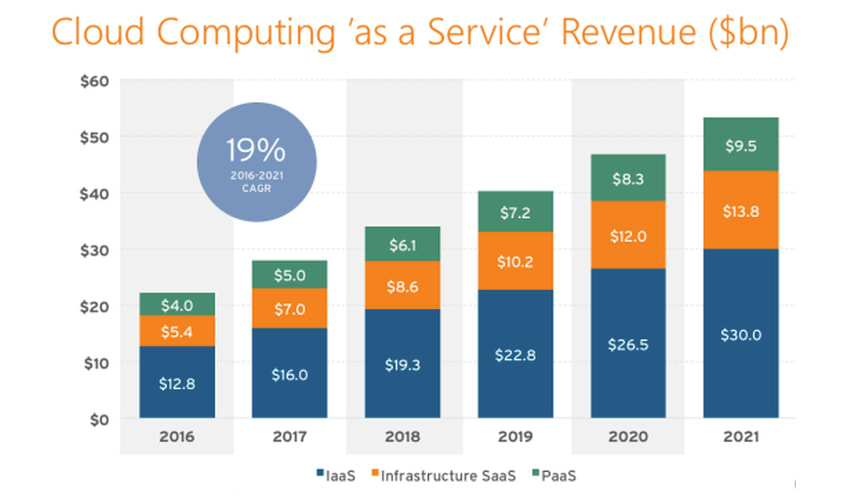
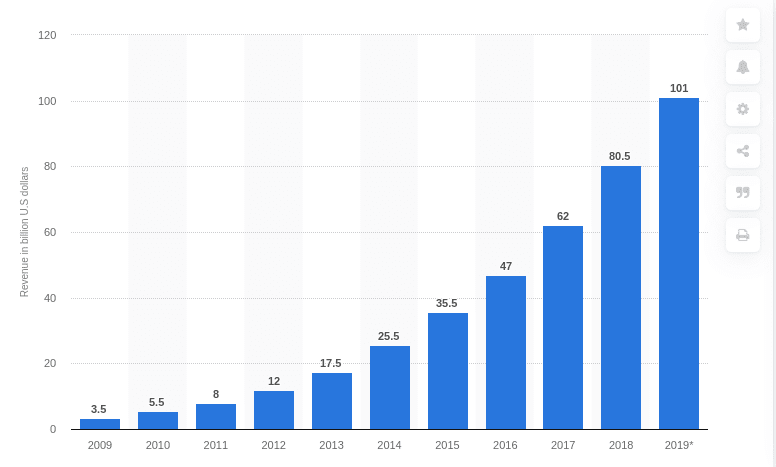
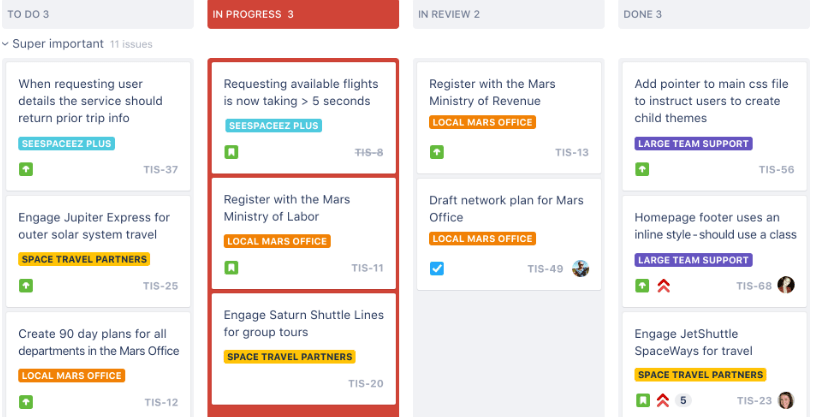
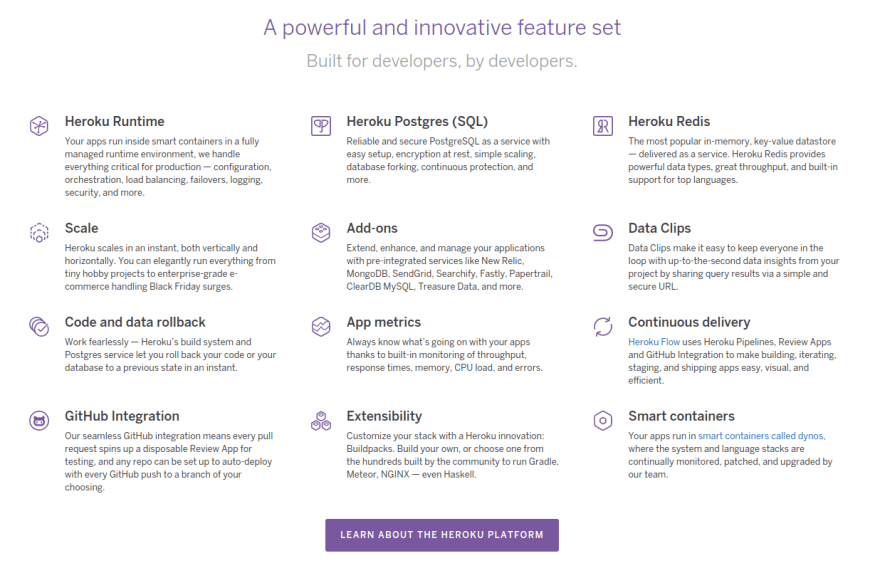
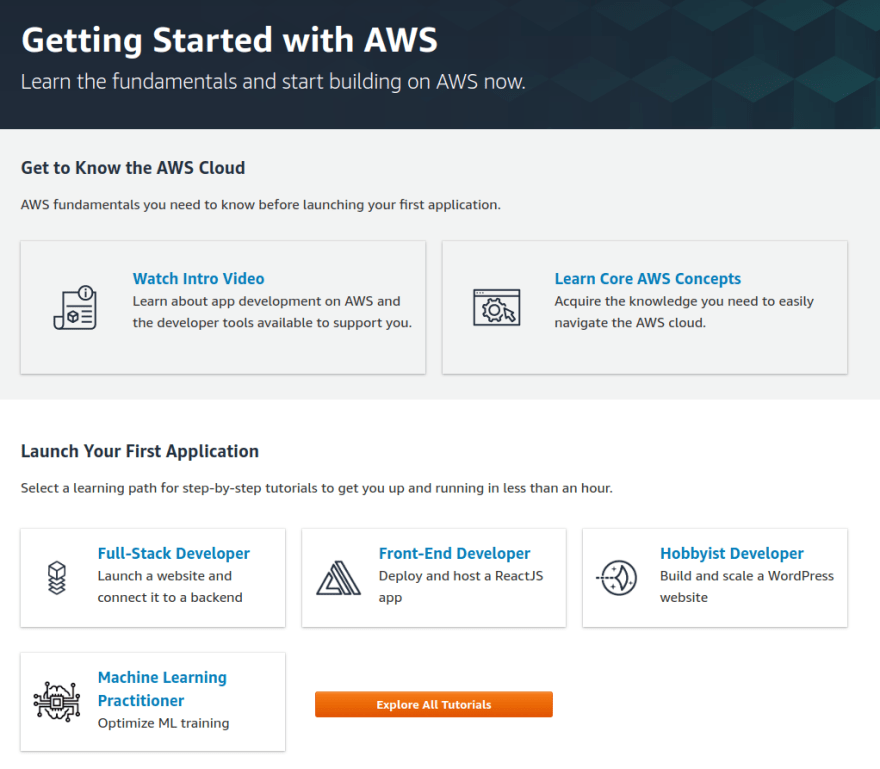
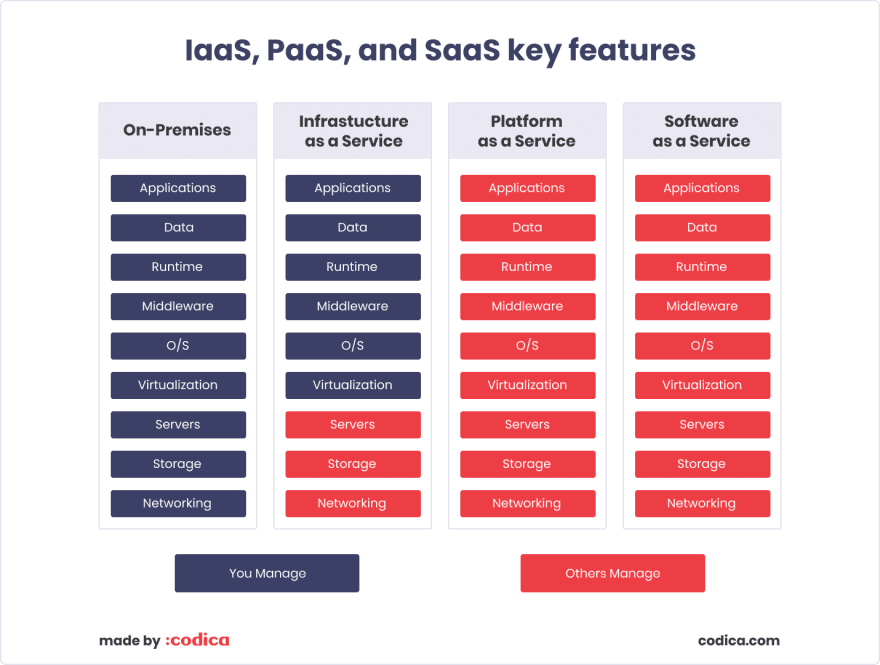

Top comments (0)
Some comments have been hidden by the post's author - find out more